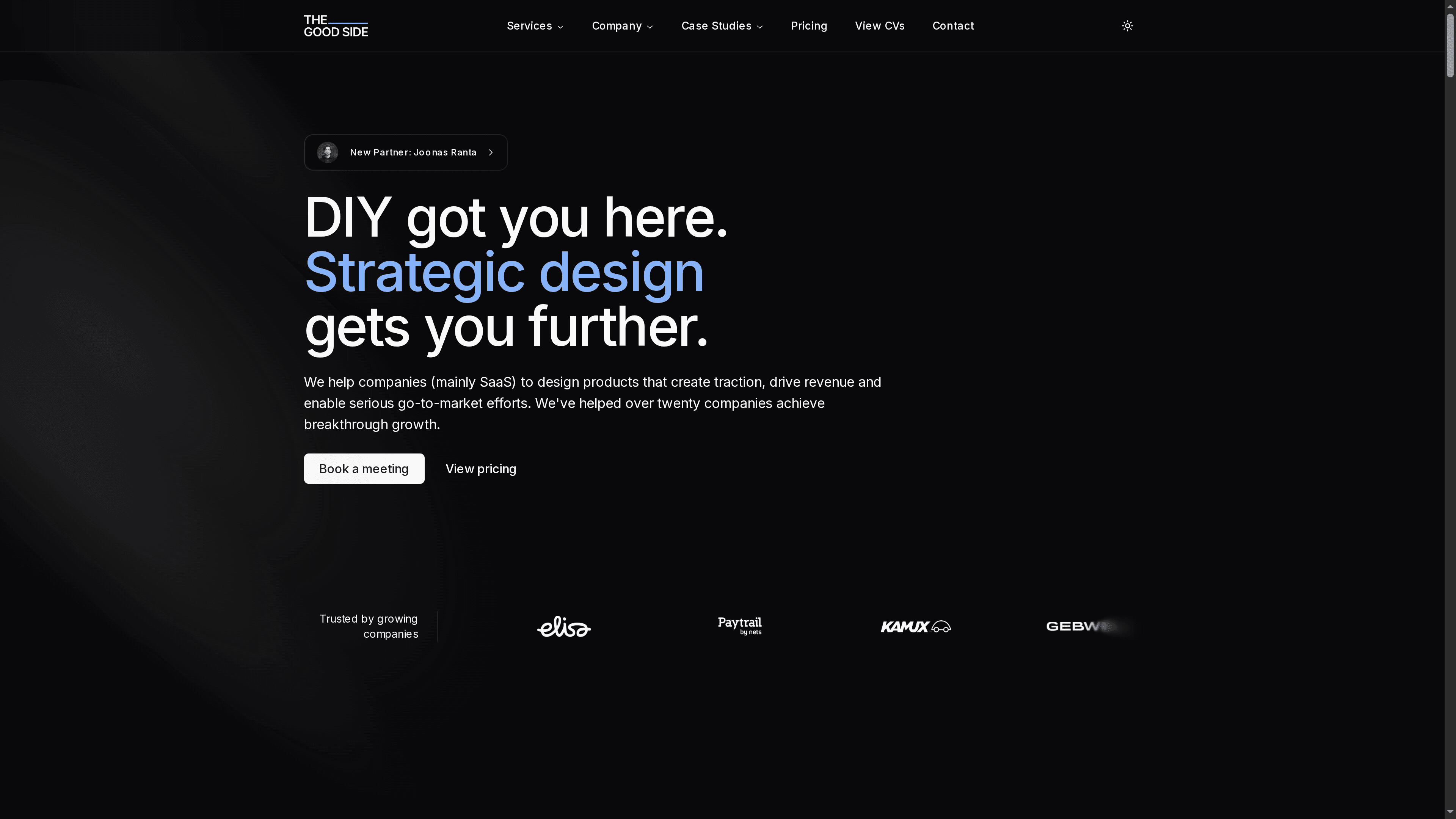Role of Service Designers: Complete SaaS Guide
Comprehensive guide to the role of service designers in SaaS. Covers key responsibilities, collaboration, real-world impact, skills, and common pitfalls.

Did you know that poorly designed services cause 70 percent of all customer frustration? Businesses are feeling the pressure to rethink how every interaction—from website clicks to in-person visits—shapes the overall experience. Understanding the unique role of service designers is now a game changer, as these professionals blend research, strategy, and creative thinking to align user needs with business goals while eliminating friction at every touchpoint.
Table of Contents
- Defining The Role Of Service Designers
- Service Designers Versus Other Design Roles
- Core Responsibilities In SaaS Projects
- Collaboration Across Teams And Departments
- Skills, Qualities, And Key Deliverables
- Common Challenges And Mistakes To Avoid
Key Takeaways
| Point | Details |
|---|---|
| Holistic User Focus | Service designers analyze the entire user journey, ensuring that both user needs and organizational capabilities are aligned for seamless experiences. |
| Cross-Functional Collaboration | They act as connectors among teams, facilitating communication and integrating insights to improve service design across departments. |
| Comprehensive Toolset | Service designers utilize a variety of methodologies including user research, journey mapping, and prototyping to create actionable solutions. |
| Avoiding Common Pitfalls | Successful service designers emphasize continuous feedback, stakeholder engagement, and iterative testing to ensure effective and relevant design outcomes. |
Defining the Role of Service Designers
A service designer is a professional who bridges the gap between user needs and organizational capabilities by crafting comprehensive, intuitive experiences across digital and physical touchpoints. According to research from the World Design Council, service design involves strategically planning and organizing people, infrastructure, communication, and materials to dramatically improve service quality and user experience.
At its core, service design examines the entire user journey from initial interaction to final outcome, focusing on making services more usable, efficient, and meaningful. Learn more about service design principles to understand how designers meticulously map out every interaction point. This holistic approach goes beyond traditional design by analyzing how users engage with services, identifying potential friction points, and creating seamless, delightful experiences.
Service designers employ a unique toolkit of research methods, including user interviews, journey mapping, prototype testing, and systems thinking. Their ultimate goal is not just aesthetic improvement, but creating sustainable solutions that deliver genuine value.

They work across multiple domains - from technology and healthcare to retail and finance - ensuring that complex service ecosystems function smoothly and intuitively for end-users.
Key responsibilities of service designers typically include:
- Conducting in-depth user research
- Creating comprehensive user journey maps
- Developing service prototypes and blueprints
- Facilitating cross-functional collaboration
- Designing interaction touchpoints
- Measuring and iterating service performance
Service Designers Versus Other Design Roles
While design roles often overlap, service designers stand apart by taking a holistic approach that transcends traditional design boundaries. According to research from Full Clarity, service design encompasses both physical and digital interactions, designing entire service experiences including processes, environments, and touchpoints to create a cohesive customer journey.
UX designers typically focus on digital interfaces and user interactions, whereas service designers analyze the entire ecosystem of a service. Learn more about design responsibility challenges to understand the nuanced differences between these roles. Service designers consider broader context, mapping out how users interact with a service across multiple channels and touchpoints, not just screen-based experiences.
Key differences between service designers and other design roles include:
- Scope: Service designers look at entire service ecosystems
- Perspective: They consider organizational and user perspectives simultaneously
- Methodology: More systems-thinking approach versus task-specific design
- Deliverables: Create comprehensive journey maps, not just interface mockups
- Goals: Optimize overall service experience, not just individual interactions
Compared to UI/UX designers who prioritize digital interactions, service designers act as strategic orchestrators. They bridge technological capabilities, user needs, and business objectives, ensuring seamless experiences that create meaningful value across all service touchpoints.
Core Responsibilities in SaaS Projects
Service designers play a critical role in SaaS projects, serving as strategic architects who transform complex user interactions into seamless, value-driven experiences. According to research from EDmates, their primary responsibility involves designing, refining, and optimizing services that deliver tangible value to both customers and businesses by meticulously mapping customer journeys and identifying critical pain points.
In SaaS environments, these designers work as cross-functional orchestrators, collaborating closely with sales, marketing, product, and support teams. Learn more about the UI/UX process in SaaS to understand how service designers integrate their insights across different organizational domains. They plan and conduct comprehensive user research, develop detailed service blueprints, and create user-centered solutions that consider the entire service lifecycle.
Key responsibilities of service designers in SaaS projects include:
Here’s a comparison of the main responsibilities of service designers in traditional roles versus SaaS projects:
| Responsibility | Traditional Service Design | Service Design in SaaS Projects |
|---|---|---|
| User Research | In-depth interviews Observation |
Interviews Surveys with SaaS users |
| Journey Mapping | Physical and digital touchpoints | Digital product flows Multi-channel |
| Prototyping | Service prototypes | Digital prototypes Usability testing |
| Collaboration | Departments and stakeholders | Sales Marketing Product Support |
| Blueprinting | Service blueprints | SaaS-specific blueprints Interaction |
| Identifying Pain Points | Friction in all service moments | Workflow inefficiencies User drop-off |
| Output | Service improvements | Tangible value for users and business |
|
- Conducting in-depth user research and interviews
- Creating comprehensive customer journey maps
- Identifying service inefficiencies and improvement opportunities
- Developing service blueprints and interaction frameworks
- Facilitating cross-team communication and alignment
- Prototyping and testing service concepts
- Translating user insights into actionable product strategies
Ultimately, service designers act as strategic connectors, bridging user needs with technological capabilities. They transform abstract user requirements into concrete design recommendations, ensuring that SaaS products not only function efficiently but also provide genuinely meaningful and engaging user experiences.
Collaboration Across Teams and Departments
Service designers function as critical connectors within organizations, bridging gaps between various teams and stakeholders. According to the World Design Council, they collaborate with multidisciplinary teams including developers, marketers, and business strategists to develop innovative services through design thinking, user research, and prototyping methodologies.
Their collaborative approach extends across multiple organizational domains. Explore the comprehensive UI/UX process in SaaS to understand how service designers integrate insights across different teams. As strategic partners to Product Managers, Product Owners, and UX Researchers, they provide essential input for product vision and ensure consistency across various user touchpoints.
Key collaboration strategies for service designers include:
- Facilitating cross-functional design workshops
- Creating shared visual communication tools
- Translating technical requirements into user-friendly language
- Mediating between user needs and business objectives
- Developing comprehensive journey maps that align team perspectives
- Presenting research insights that drive collective understanding
- Establishing communication protocols across departments
Ultimately, service designers act as organizational translators, transforming complex interdepartmental challenges into coherent, user-centric solutions. They possess a unique ability to synthesize diverse perspectives, ensuring that organizational efforts consistently align with user expectations and business goals.
Skills, Qualities, and Key Deliverables
Service designers require a unique blend of strategic thinking and practical skills that go beyond traditional design capabilities. According to the Institute of Emerging Design, these professionals must possess a strategic mindset that comprehensively understands business goals, customer needs, and evolving market trends while communicating ideas through compelling presentations and persuasive visualizations.
Technical skills form the foundation of a service designer’s toolkit. Explore the step-by-step UI/UX process to understand the depth of expertise required. Their skill set typically includes proficiency in design thinking, user research methodologies, data analysis, prototyping, and cross-functional communication techniques that transform complex insights into actionable recommendations.
Key skills and qualities for service designers include:
- Strategic thinking and systems perspective
- Advanced user research capabilities
- Strong data interpretation and visualization skills
- Empathy and user-centered design approach
- Excellent verbal and visual communication
- Ability to translate complex concepts simply
- Comfort with ambiguity and iterative processes
Critical deliverables produced by service designers encompass comprehensive artifacts that guide organizational strategy. These typically include customer journey maps, service blueprints, research reports, persona development, interaction frameworks, and visual presentations that communicate current service experiences and propose innovative improvements. Their work ultimately bridges user expectations with organizational capabilities, creating more intuitive and meaningful service experiences.
Common Challenges and Mistakes to Avoid
Service designers frequently encounter complex challenges that can derail their strategic efforts if not carefully navigated. The most critical mistake is designing in isolation, which disconnects solutions from real-world context and stakeholder needs. According to the World Design Council, service designers must actively avoid working in silos and instead engage in collaborative co-creation sessions that involve stakeholders, staff, and customers throughout the design process.
Learn more about avoiding design pitfalls to understand the nuanced challenges in service design. Effective service designers recognize that prototyping and testing services across different touchpoints is crucial to validating how various interactions work together, preventing potential friction points and ensuring a cohesive user experience.
Common challenges and mistakes service designers should avoid include:
- Neglecting cross-functional collaboration
- Overlooking staff perspectives and internal user experiences
- Designing without continuous user feedback
- Creating overly complex service interactions
- Failing to align design with business objectives
- Ignoring technological and operational constraints
- Underestimating the importance of iterative testing
Successful service designers maintain a holistic perspective, balancing user needs with organizational capabilities. They understand that effective design is not about creating perfect solutions, but about developing adaptive, flexible frameworks that can evolve with changing user expectations and technological landscapes.
Elevate Your SaaS Service Design with The Good Side
Understanding the multifaceted role of service designers reveals the significant challenges SaaS companies face today: fragmented user journeys, disconnected interfaces, and misaligned business goals. If your team struggles to bridge these gaps or feels overwhelmed by complex user ecosystem mapping and cross-team collaboration, you are not alone. The article highlights crucial pain points like workflow inefficiencies and the need for comprehensive journey mapping that moves beyond superficial UI fixes.
The Good Side Oy offers specialized strategic design solutions tailored for SaaS businesses. Our senior designers bring deep expertise in service design, user research, and UI/UX optimization to create seamless, high-performing products that drive activation, conversions, and revenue growth. Whether you need part-time consulting or embedded designers, our flexible engagements help you avoid traditional hiring delays and quickly scale support. Start your transformation with a free design audit and rapid talent integration, ensuring your product delivers real, user-centered value.

Ready to turn disjointed service experiences into a cohesive strategy that aligns user needs with your business goals? Explore how our UI/UX design and user research process supports SaaS growth. Discover the power of senior, SaaS-specialized designers at The Good Side and schedule your free audit today to start accelerating your product’s success with a proven service design approach.
Frequently Asked Questions
What is the role of a service designer in SaaS projects?
Service designers in SaaS projects focus on optimizing user interactions and experiences by mapping customer journeys, identifying pain points, and collaborating with cross-functional teams to create user-centered solutions.
How do service designers differ from UX designers?
Service designers take a holistic approach to service creation, considering both digital and physical interactions, while UX designers typically focus on digital interfaces and user interactions.
What are the key responsibilities of service designers?
Key responsibilities of service designers include conducting user research, creating journey maps, developing service prototypes, identifying inefficiencies, facilitating collaboration across teams, and measuring service performance.
What skills are essential for a successful service designer?
Essential skills for service designers include strategic thinking, advanced user research capabilities, data interpretation, empathy, strong communication skills, and the ability to translate complex concepts into actionable design recommendations.